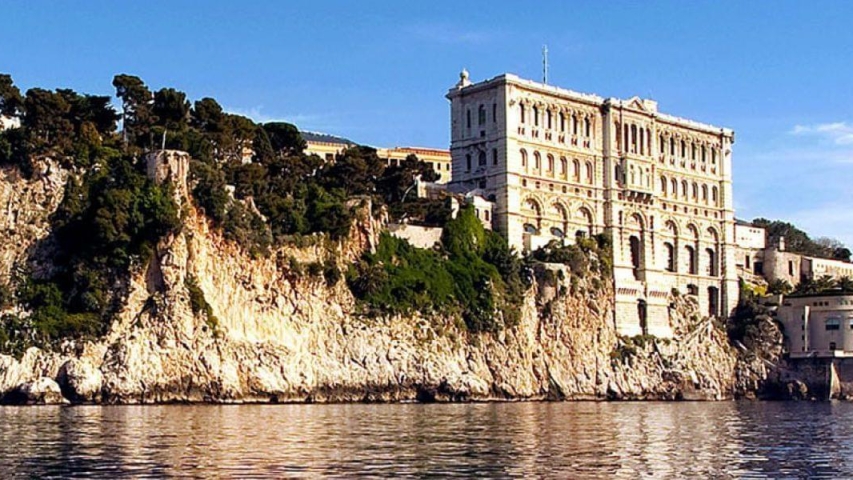
Photo credits: Jardin Exotique de Monaco
The Oceanographic Museum of Monaco, perched dramatically on Monaco’s cliffside “Rocher,” remains an enduring testament to the bold ambition of Prince Albert I and a beacon of marine science.
Conceived by Prince Albert I, often called the "Navigator Prince," the museum was envisioned not merely as a repository of marine life, but as a “temple to the sea,” a place where science, education, and exploration would meet under one roof.
Construction began in 1899 and spanned eleven years. Built into the face of a limestone cliff overlooking the Mediterranean Sea, the museum rises 85 meters above the water and was constructed from more than 100,000 tons of white stone quarried from nearby La Turbie. Its Baroque Revival façade, adorned with intricate marine motifs - waves, shells, and sea creatures - echoes its purpose. In homage to maritime exploration, the names of twenty historic research vessels, including the Challenger, Fram, and Prince Albert’s own Princesse Alice, are inscribed on the museum's frieze.
The museum was inaugurated on March 29, 1910, becoming the physical embodiment of Prince Albert I’s oceanographic legacy. A pioneering oceanographer himself, he had undertaken 28 scientific expeditions and founded the Institut océanographique in 1906 to advance marine research and public understanding of ocean science. The museum quickly became a central institution of that mission.
Inside, the Oceanographic Museum houses a vast collection of marine specimens, scientific instruments, ship models, and artifacts crafted from coral, nacre, and other oceanic materials. One of its key exhibits, “A Sailor’s Career,” features a recreation of Prince Albert I’s research laboratory aboard his yacht L’Hirondelle, where early studies of anaphylaxis took place - work that contributed to French physiologist Charles Richet winning the Nobel Prize in 1913.
The museum’s aquariums, added in its early years and continuously updated since, showcase more than 6,000 marine organisms, representing both Mediterranean and tropical ecosystems. Today, the aquarium remains a critical part of the museum’s appeal, combining scientific accuracy with immersive educational displays.
A defining chapter in the museum's modern history came with the directorship of Jacques-Yves Cousteau, who led the institution from 1957 to 1988. Under Cousteau’s guidance, the museum expanded its scientific reach and public programming, reinforcing its status as a global leader in ocean conservation.
In 2010, the museum marked its centenary with major renovations that preserved its historic character while modernizing its exhibitions. Today, it welcomes approximately 600,000 visitors annually, serving as both a cultural monument and an active center for marine research and education.
The Oceanographic Museum of Monaco endures not only as a physical structure of imposing beauty but also as a living testament to one of the world’s earliest efforts to unite ocean science and public engagement.

